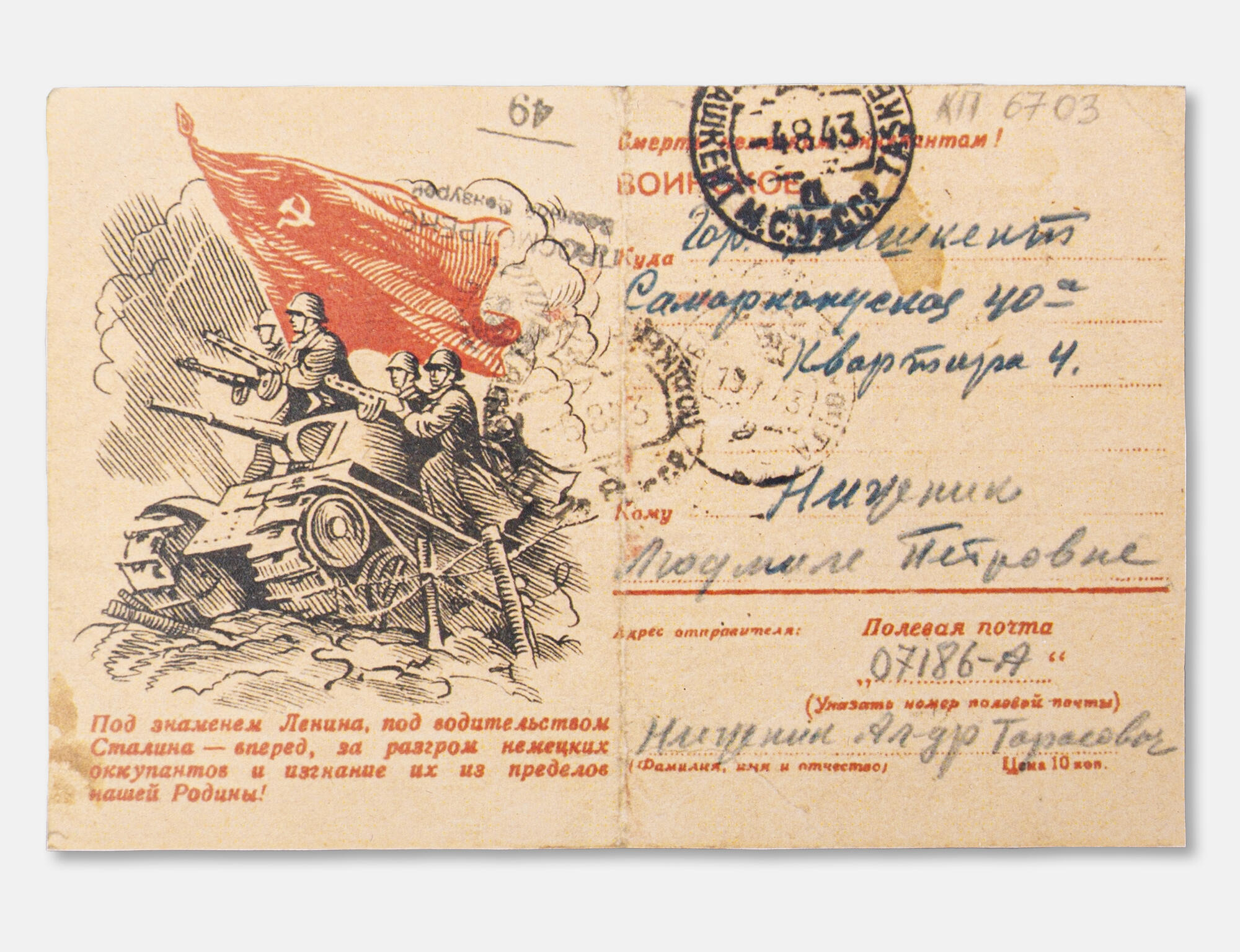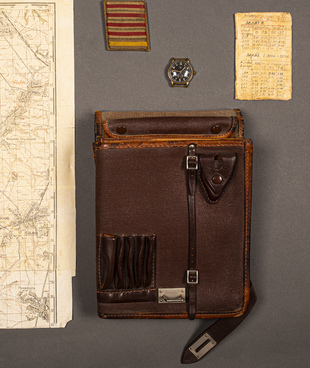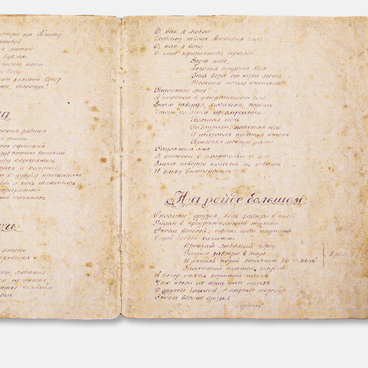This postcard from World War II is a memorial item associated with Alexander Tarasovich Nizhnik. During the Battle of Kursk, he was a guard major of the 5th Guards Tank Army. The Red Army soldier addressed this postcard to his wife Lyudmila Petrovna in Tashkent.
Alexander Nizhnik was born in 1906 in the village of Balakleya, Poltava Oblast (the Ukrainian SSR). In 1928, he was called up to serve in the Red Army. He was fighting on the fronts of the Great Patriotic War from December 1, 1941. For his military services, Alexander Nizhnik was awarded the Order of the Red Star. On July 20, 1943, he died of his wounds. This postcard was his last message from the front.
The postcard features a duotone image of the red banner and a soldier with a Shpagin submachine gun on a T-34 tank. At the bottom is a red inscription in cursive: “Under the banner of Lenin, under the leadership of Stalin — forward, for the defeat of the German occupiers and their expulsion from the borders of our Homeland!”
Alexander Nizhnik wrote his message on a printed letterhead with a copying pencil on July 17, 1943. On the postcard, one can distinguish the postal seal, the recipient’s address, the field mail number 07186-A and the stamp “Reviewed by military censorship 49”.
During the Great Patriotic War, censorship was enforced: the letters could not contain information about the movements of troops, their dislocation or defeatist messages. All prohibited information was shaded with black ink.
Unlike other types of printed materials, the production of which fell sharply during the Great Patriotic War, the publication of postcards did not lag behind the pre-war level. At the front and in the rear, it was not just a message to a loved one, but also an effective propaganda tool. From the first months of the war, the People’s Commissariat for Communications of the USSR paid great attention to providing the Red Army and the population with postcards.
According to the “Notice on the Procedure for Receiving and Sending International and Domestic Postal and Telegraphic Correspondence in Wartime” dated July 8, 1941, it was forbidden to “accept and send postcards with panoramic pictures and pasted photographs.” Thus, illustrated postcards became widespread. The subjects were diverse: postcards featured propaganda posters, depictions of heroic plots, satirical images, illustrations of songs and documentary pictures.


